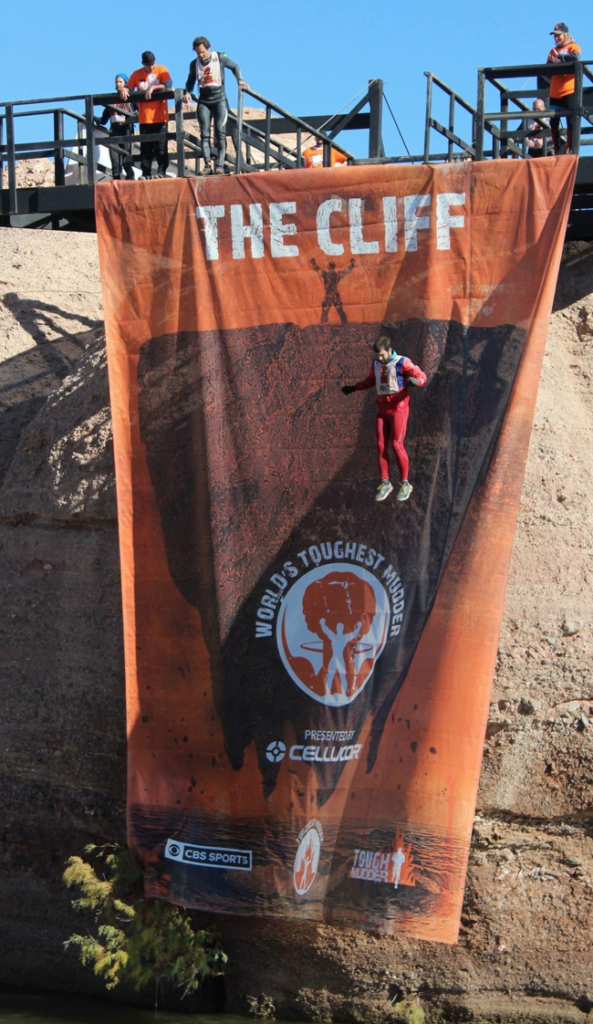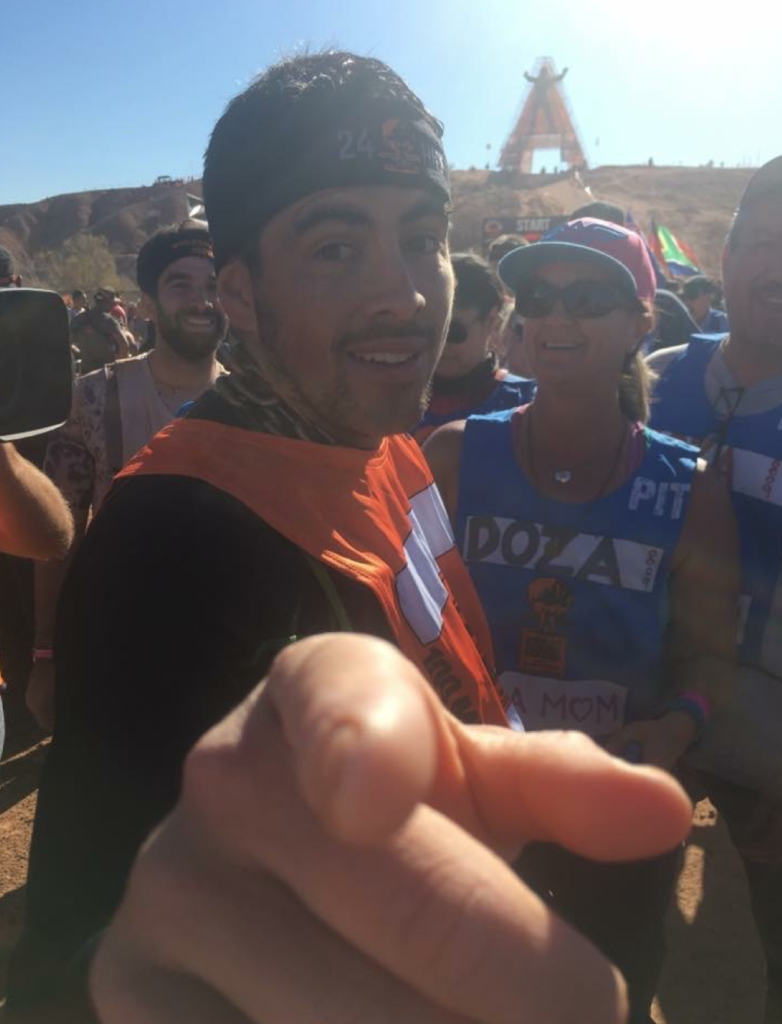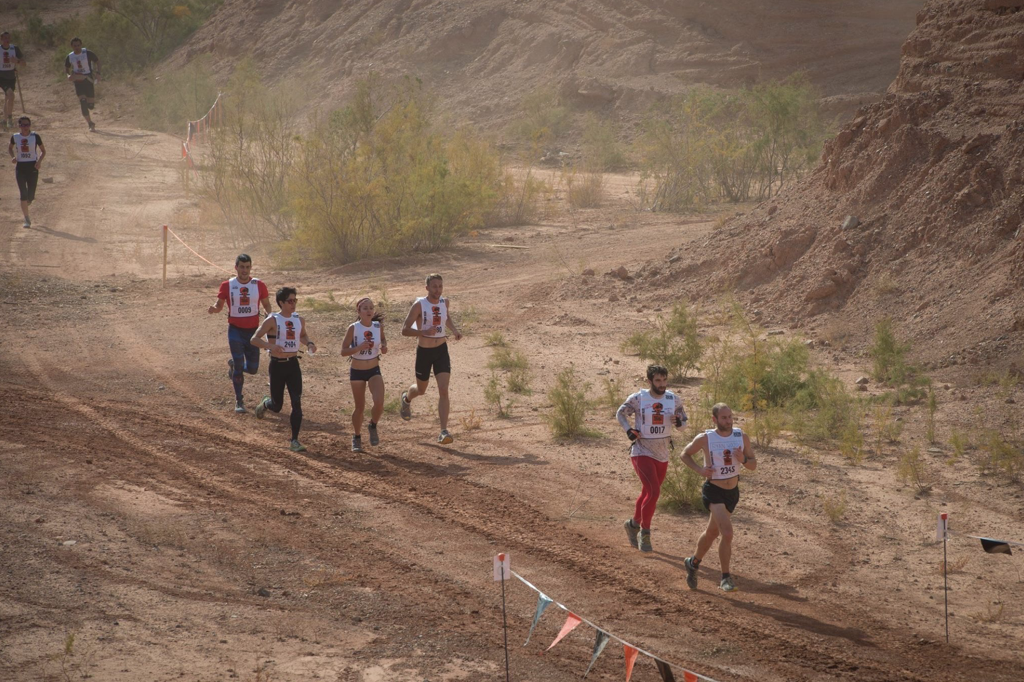
One of the joys of running a new event series that promises to bring obstacles to a new level and enhance the competition of the event like we haven’t seen before is that we don’t know what we’re getting into. It’s like jumping off a 37ft cliff: it’s scary, but we’ll survive somehow. As a data scientist and detail-oriented person, however, I try to maximize our performance by controlling what I can control. So let’s review what we know and what we can do with that. Here are the basic details of the event:
Midnight to 8am Sunday
Fewer obstacles open from 0000-0100
2 different laps of 5-miles each
Tough Mudder also has given us a few benchmarks for what they think will be awesome performance:
25 miles: has a shot at top 5 at World’s Toughest Mudder (WTM)
50 miles: has a shot at 110 miles (male) or 100 miles (female) at WTM
So let’s run through the math of what that means. Since we don’t know how long obstacles will be closed for the sprint lap, we can’t incorporate that into our math. Here’s the paces needed for key landmark distances including pit and obstacle time:
25 miles: 19:12 min/mile
40 miles: 12:00 min/mile
50 miles: 9:36 min/mile
If you prefer looking at it by 5-mile lap again including pit and obstacle time, you get:
25 miles: 1h:36min/lap
40 miles: 1h/lap
50 miles: 48min/lap
But how do you interpret those numbers?
As a mental marker, you will notice that this 25-mile mark corresponds exactly to the pace needed for 75-miles at WTM. As someone who’s done that or more three times in a row, I can tell you that 75 miles at WTM requires constant moving with purpose, hiking the uphills, jogging the flats and controlled-falling the downhills. Obstacles can be failed, but not all of them.
However, without knowing the obstacles and the elevation, numbers are hard to interpret. The way to combat that, we can do something that I call “running by feel.” Instead of using raw numbers to define pace, we can use how the miles feel to guide how long we can keep up a consistent effort. This helps us scale efforts to our skill level instead of running a prescribed pace.
The first piece of advice that I’ll give you is: don’t start too fast. Consider yourself warned by Kris Mendoza (3rd place 2016, 100 miles).

For Toughest, I’d recommend starting the race at a “very comfortable” pace and sticking with that as much as possible. Your question is: what is “very comfortable?” Since it’s an 8-hour race, you’ll be doing more work than a flat marathon that would take you between 3-5 hours. I call marathon-race-pace “comfortably fast.” In my mind, I take the intensity down 10-20% to get something similar or slightly faster than the pace you’d run during a one-hour easy recovery run.
But is that fast enough?
During my one-hour recovery runs, my heart rate is between 135-145, which is around 75% of my max heart rate (I’m 30.). If you multiply my usual pace on those runs (7:45min/mi) by 8 hours, you get 61 miles. If you add in crazy hills to that (probably about 1500ft of gain per 5 miles in LA), you slow the pace substantially. If you add super-charged obstacles, you’ll slow me down even more. Even after both of those factors, it seems reasonable to expect that I’ll get 25 miles with time to spare. I think that’s by design: they want the people like me to qualify for a contender. That may be because the contender criteria are the same for women, and the top female at WTM has a habit of hitting similar mileage to me every year. (Amelia Boone and I both hit 75+ miles in 2014 & 2015. In 2016, I hit 90+ miles and Stephanie Bishop hit 85+ miles.)

But what about you?
Another comparison we can make is to multi lapping a usual Tough Mudder. When multi lapping, the way to get the most laps was to leave on the first wave (8 am) and then make it back as many times as possible before the final wave. Depending on the size of the event, the last wave was anywhere from 11 am to 2 pm. If you wanted to do three laps, then you needed to move with purpose and have a bigger crowd at your venue. Although it’s mildly unrealistic, assume someone who ran three laps ran every lap the same pace and took as much time as possible to do so. That gives them from 8am-2pm to do two laps and start their third. Their total time would be 9 hours for 30-36 miles of regular Tough Mudder including the hills and obstacles. The obstacles at Toughest will be harder, but my overall conclusion is if you could do three laps on a Saturday Tough Mudder, you’ll be able to do 25+ miles of a Toughest. Yes, that means that there will be lots of contender qualifiers. I think this is by design.


Based on my understanding, the elite contender category at WTM is only available to the Top 5 at Toughest events, not getting over 50 miles. So if more than 5 people get over 50, at least one won’t qualify for the bonus money at WTM. Similarly, if nobody gets over 50 miles at a Toughest, 5 people will still get into the elite contender category with bonus money elgibility.
Anyone over 50 miles does get a free WTM entry, plus bonus money itself if you’re the first to do it.
You are correct NoahB! Since they will only give the bonus money to the single person who wins and gets 50 miles, they’re expecting for it to be difficult for the winner to get 50 miles. That’d be a similar person who would have a shot at the bonus money at WTM. Officially, to be eligible for the bonus money at WTM, you just need top 5, not 50 miles.
Thanks Wesley for this analysis! I think you’re right on with the way you’ve broken this down.